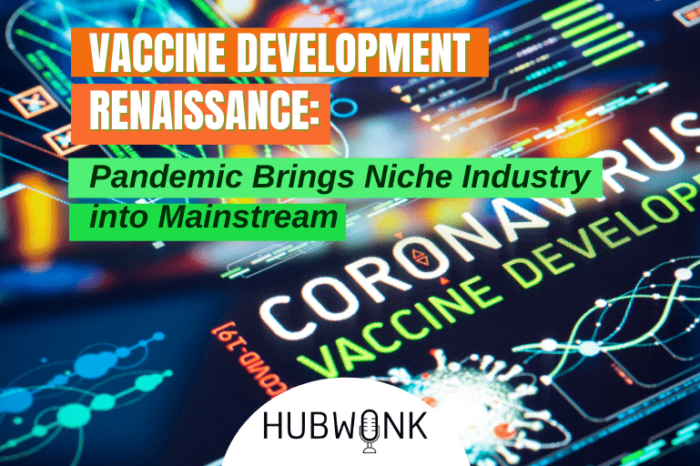Vaccine Development Renaissance: Pandemic Brings Niche Industry into Mainstream
/in COVID Health, COVID Life Sciences, COVID Podcasts, Featured, Healthcare, Podcast Hubwonk /by Editorial StaffThis week on Hubwonk, host Joe Selvaggi talks with virologist, Dr. Peter Kolchinsky, about the explosion of vaccine technologies and innovations brought into the spotlight by the massive investment to fight the pandemic, and dives deeply into the exciting promise of vaccines to combat an ever-widening range of disease.
Guest:
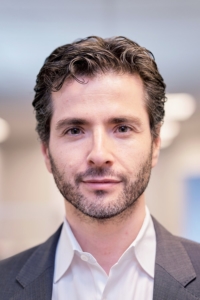 Peter Kolchinsky, Ph.D. is a biotechnology investor and a scientist. He co-founded and runs the Boston-based investment firm RA Capital Management; writes and teaches about biomedical entrepreneurship and its potential to transform global health; serves on the boards of several public and private drug development companies; and lives in Massachusetts with his historian/equestrian wife, strong-willed children, and reasonably well-trained dog. In addition to The Great American Drug Deal, he is the author of The Entrepreneur’s Guide to a Biotech Startup. Peter served on the Board of Global Science and Technology for the National Academy of Sciences and writes about the biotech social contract. He holds a BA from Cornell University and a Ph.D. in Virology from Harvard University.
Peter Kolchinsky, Ph.D. is a biotechnology investor and a scientist. He co-founded and runs the Boston-based investment firm RA Capital Management; writes and teaches about biomedical entrepreneurship and its potential to transform global health; serves on the boards of several public and private drug development companies; and lives in Massachusetts with his historian/equestrian wife, strong-willed children, and reasonably well-trained dog. In addition to The Great American Drug Deal, he is the author of The Entrepreneur’s Guide to a Biotech Startup. Peter served on the Board of Global Science and Technology for the National Academy of Sciences and writes about the biotech social contract. He holds a BA from Cornell University and a Ph.D. in Virology from Harvard University.
WATCH:
Get new episodes of Hubwonk in your inbox!
Read a Transcript of This Episode
Please excuse typos.
Joe Selvaggi:
This is Hubwonk I’m Joe Selvaggi
Welcome to Hubwonk, a podcast of Pioneer Institute, a think tank in Boston, the development of the COVID 19 vaccines are among the greatest technical achievements of the 21st century with nearly 8 billion worldwide vaccine doses to date and nearly 29 million doses administered each day. The world has fought back against the worst pandemic in 100 years before COVID-19 the realm of vaccine development had been the exclusive domain of large pharmaceutical firms that could both endure the long arduous approval process and tolerate the razor thin margin from each dose. Given the dire threat of COVID 19, demanded the world, sit up and immediately invest in the promise of new vaccine technologies. This massive pandemic induced project has created a vaccine Renaissance from which new platforms can develop vaccines within days of sequencing viruses and then rapidly produce and distribute them around the world. This newly appreciated realm of science, as many of its roots here in Boston and Cambridge, we’re an ecosystem of highly specialized scientists compete and collaborate to help combat emerging strands of COVID and bolster of the world’s defenses against a future unknown deadly pathogen.
Joe Selvaggi:
Could our region become destined to be the Silicon valley for next generation vaccine technology, and will vaccine innovation be regarded as vital for global health after this pandemic has subsided. My guest today is Dr. Peter Kolchinsky a doctor in virology noted author and founder and managing partner of the investment firm, RA capital management. Dr. Kolchinsky has written extensively on the promises of pharmaceutical technologies and sees the current success of the quickly developed, safe and effective COVID-19 vaccines as the culmination of decades of experimentation, investment and tireless, trial, and error, which is now bearing fruit for the benefit of mankind. Dr. Kolchinsky is sharing with us his views on the efficacy of current vaccines and vaccine platforms, the public health considerations for effective booster design, and the promise of this technology to further establish our region as a vital center for medical innovation. When I return, I’ll be joined by Dr. Peter Kolchinsky.
Joe Selvaggi:
Okay. We’re back. This is Hubwonk I’m Joe Selvaggi, and I’m now joined by Dr. Peter Kolchinsky, founder and managing partner of the investment firm, RA capital management and author of the great American drug deal. Welcome back to hub long, Peter, thanks for having me, Joe. Well, in our last conversations, you were wonderful. You very informative about the science behind the, the then new vaccines the Mr. RNA vaccines. And now here we are further down the road about a year and a half into the epidemic. And now I, I just looked this up more than 7 billion vaccine doses have been administered worldwide. So we know these vaccines have been safe and effective in reducing severe disease and death. But there seems to be a growing consensus that boosters may be necessary to preserve the efficacy of the initial doses. Let’s start there. Let’s start with the boosters. What do you think about them? Are they necessary and why are they necessary? Yes.
Dr. Peter Kolchinsky:
So I thought that it would be pretty clear, you know, very early on that this would be a virus that would stay with us forever and that we would be boosting fairly regularly. And it didn’t seem like that big a deal, you know to imagine a world where like we get annual flu shots, we would eventually mix in a COVID booster with a flu shot and get an annual boost of our COVID immunity. Now at the time there were, you know some people who thought, oh, this is going to be a one and done vaccine, or the virus will somehow go away on its own, but it, you know, I’m, I’m a neurologist by training. You know, you can look at the common human cold viruses. There are four of them and they circulate and come back every year or two.
Dr. Peter Kolchinsky:
Right? So you look at that and you think natural immunity is not going to just beat the virus to submission and make it go away. It, you reach an equilibrium with, with the virus and it will come back and COVID will be like a fifth virus. But it won’t be like the common cold. It’ll just be a much more severe infection when you get it, you know, even mild COVID is, you know, not just a cold it’s more than that. So, you know, it struck me that as long as we all get booster shots, we can at least make it you know, like a mild flu or something like that, that we, we might get occasionally, you know elderly will be at greater risk and they, they respond more weakly to vaccines. You know, but ultimately if all of us get our boosters, we can help shield through herd immunity.
Dr. Peter Kolchinsky:
Those people that are, might be immunocompromised or whatever. Now flu vaccine uptake is at best 50% in, in the population, older people tend to be better about getting those flu shots, but I honestly figured that, you know, COVID would be you know, so threatening that, that people would be much more likely to get COVID vaccines. And I think that that’s been true only sort of like if you were in a place that was already open to vaccines, and maybe in the past, you didn’t get a flu vaccine because you were too busy and whatever COVID made, get it, you found the time you went in and you got it right. But if you were in a place where, you know, maybe there was a greater hesitancy about vaccines or, or, you know real you know, reservation there it seems to really polarized, you know, and, and I, I did not expect the country to be, you know, this split about the value of vaccines. Let’s see whether over the coming years you know, those people that resist vaccines get tired of recurrent COVID infections. I mean, even mild, moderate Cove, it’s not fun. So
Joe Selvaggi:
I want to just we’ll move on from this. I you mentioned it’s sort of coming around every two or three years and the need for boosters, is it because the virus is changing or does, is it a function of our, our immunity? You, you, you use the analogy of, of, you know the vaccine shows our body with the bad guy looks like, so we’re ready when he, when he shows up, which, which isn’t,
Dr. Peter Kolchinsky:
It’s both. So we do see that immunity from the vaccine wanes and that is similar to the natural immunity you would get if you had an infection that two wanes and you see with research that was done on common cold viruses relatively recently, cause they weren’t like really deeply studied before COVID you have to like go and search for literature on common cold viruses. And there were some analysis done of blood samples that had been stored up over many years, looking at you know, how common cold buyers sprains evolved and what you realized was, oh yeah, we’ve got four common cold. Coronaviruses. but they haven’t been the same strains, much like COVID has mutated. And we now have Delta and, you know, there’s Epsilon and eventually we’ll have omega, you know we similarly have different strains of each of the four.
Dr. Peter Kolchinsky:
We have different variants of each of the four common cold Corona viruses. So those viruses come back slightly different. And so it’s probably a combination of waning immunity against, you know, a given strain after you’ve, you’ve gotten that particular cold virus and that virus coming back a little bit different, right. If the virus didn’t change at all you know, a that would be surprising, but B it would probably just mean that it would take longer for your immunity to wane even further before that same strain could re-infect you,
Joe Selvaggi:
So let, let’s take it step back from talking about boosters and talk about the vaccine industry itself. You you’re a scientist, but you’re also an investor in the pharma universe. You recently wrote in a piece that the vaccine business has long been. I’m thinking I’m quoting it directly has been a quiet and profitable game of Kings. Why is vaccine that business, the CA game of Kings, I assume that means it’s, it’s, it’s managed by large firms rather than small firms explain to our listeners what that means.
Dr. Peter Kolchinsky:
Sure. so it’s, I would argue a fairly mature business where some big companies have gotten good at making large numbers of doses. It’s kind of a business where generally your products are sold at lower prices, but you have to make, you know, huge volumes. And so the facilities that make these are larger you know, in the case of treating cancer with a pill the, the amount of drug that you might make is modest enough that, you know, you can contract with various contract manufacturers and it doesn’t take, you know, as, as many people or as much resources or land in order to make the necessary amount of doses of that extremely high priced, low volume product vaccines, you know, require some heavy industrial equipment. So, you know it makes sense, the bigger companies that have more experience with manufacturing that scale would eventually come to dominate.
Dr. Peter Kolchinsky:
If some new company comes along once in a while, that has a better technology. Eventually it gets acquired by one of the big companies. And so the products that people see are exclusively, you know, sold by big pharma companies. And over the years there have been a few of them. So it’s not like there’s, you know, 10 big farmers that are in vaccines. It’s basically GSK Santa Fe, Merck and Pfizer, and there’s a couple of mid-level in players. And if you think about respiratory viruses, which is what we’re dealing with as opposed to a lot of pediatric vaccines, respiratory viruses like flu vaccines are really provided primarily by sanity. So Santa Fe has not been a name that people, you know, have spoken about during this COVID pandemic, right. They picked a horse in this race and it’s been a slow horse, and I’m sure in hindsight, they’re beating themselves up thinking like, oh, that was the wrong horse.
Dr. Peter Kolchinsky:
Pfizer you know, sells a couple of vaccines, but one particular pneumococcal vaccine is for a bacterial infection. It’s, Previnar, it’s a big selling vaccine. There are now a couple of smaller companies are gunning for it to try to replace it. But Pfizer got into COVID in a really big way with an early deal with this company BioNTech and Mr. And a company. And they just went all out to scale manufacturing and they, they have one of the two dominant RNA vaccines that are out there. Modern is a new player. So modern is a a small company that got big you know, COVID really like put modern on the map in a really huge way. It was a fairly big, small to mid cap biotech company. I mean, when it went public, it went public at a multi-billion dollar valuation.
Dr. Peter Kolchinsky:
And you know, it’s, if the pandemic hadn’t happened, you know, Madonna would right now be focused on a cytomegalovirus that doesn’t quite roll off the tongue for most people now, people would not be talking about like, oh my God, thank God. There’s an MRN vaccine coming for, you know, a sudden megalovirus, it’s an important buyers. You know, and, and it can cause birth defects and problems during pregnancy, if a woman gets a CMV infection, but it’s a different, you know, kind of product, but it was always the kind of technology modern knew it, and its founders knew it that should there ever be a pandemic. It would allow a rapid response. So COVID really appended the slow stable, you know, sort of sleepy, but profitable world of vaccines and made Pfizer a respiratory vaccine company and made Madonna a new giant player.
Dr. Peter Kolchinsky:
And they sucked up a ton of talent from other companies like GSK and mark and sanity that, you know, really don’t have you know, sort of advanced forces in the race, just, just yet mark and GSK, arguably don’t. Santa Fe does they’re in phase three with a protein based vaccine. And another company that, you know, became big comparatively big was no of X. They were able to raise a bunch of money as well and hire a lot of people and they are just now starting to file for approval in various parts of the world. So maybe we’ll see their vaccine on the market soon. So if we do, it means that you will have three new names in the respiratory vaccine space, Madonna Pfizer, and Novak’s where before, as far as the U S was concerned, it was just Santa Fe.
Dr. Peter Kolchinsky:
Right. So does this mean that all of a sudden we’re going to see lots of vaccine startups and that it’s a dynamic field and the answer is not yet the, what the article you’re referring to. You know, I wrote about this problem that we’ve only just tasted you know, the vaccine space that, that segment of the biotech industry has only just tasted a startup culture, right? People left jobs that they might’ve been at for years and joined a new company to work on an intense, fast paced project and discovered what it’s like to be charged with an important task and given, you know, tons of money and, you know, will they do it again? Will they say that, you know what MRA was exactly the right kind of vaccine for ending the pandemic. But now that we’re moving into the sort peacetime market, the endemic market of annual booster shots, we really need to pivot to technologies that are going to be less painful and uncomfortable don’t cause chills.
Dr. Peter Kolchinsky:
I mean, you know, MRNs shots are, are far less comfortable than a flu shots. Hey, we need to pivot to, you know protein based COVID vaccines. So let’s flood into other names. So I mentioned one of the companies I’m on the board of, I cost the backs, right. And I point out that their technologies are in some ways advanced versions of what are otherwise conventional protein based vaccines and you know, a company like that can raise money in an IPO, but then it has to hire people. And so where are you going to hire them from, you know, a lot of the people that were open to moving from Santa Fe already got poached by other companies, right. So you’re trying to rip them out of what, like Madonna or Pfizer or Novak’s, or, or whatever. Right. So they’re in the throws of scaling up vaccines and saving the world and you have to inspire them to look ahead and realize like, yeah, but we need your dynamic, you know flexible mind and skills to now work on the next thing, the next wave of, of vaccines. So it’ll be a little while I think before the vaccine sector becomes dynamic and people start looking for the next cool thing that will improve upon the last one that we had, but I think it’ll get there.
Joe Selvaggi:
So you, you, you, you introduced a lot of interesting concepts there. One of them being that whereas vaccines, might’ve been a as you say, the, the realm of Kings, the big players and perhaps small marginal benefit marginal profit, but you know, if you produce enough of it, you can make some money on, on vaccines. COVID seems to have changed everything at the very least made vaccines you know dinner table conversation for everyone on planet earth. You describe a term that you described as inverted capital dilemma. I think you touched on it in your, your most recent, your, your last answer in that you can throw lots and lots of money at a technology. But there’s only so many people in that space. I I’m reminded of the.com universe, even here in Boston. One a startup was hiring from another startup. There’s, you know, there’s only so many people who can code it takes a while to learn how to code. And so they were just stealing each other’s employees. Is that what we’re in the midst of right now? Well
Dr. Peter Kolchinsky:
I would say that that’s a sign of a very healthy, vibrant ecosystem, you know investors have to sell something to buy something. So companies are constantly talking to you into investing in them. But of course, what that also means is you got to sell something like, what are you gonna sell? Maybe you’ve got a whole bunch of money stuck in treasuries in which case, okay, you’re not selling anything that’s particularly dynamic, but if you’re invested in a bunch of other companies, you’re trying to, you know, pick the, the ones that are better, you miss it. But I love all my companies. Like you’re going to have to love me a little bit more if you’re going to invest in me, right. That’s essentially what an entrepreneur is saying. And I would argue that, you know workers are capital, you know we even have a slide deck on the RA cap website where we try to get the kinds of people that work in biotech companies to recognize that they are themselves investors, they’re investing their time and expertise, and they should come to understand what they’re being paid with, you know stock, how do, how should they value stock and options?
Dr. Peter Kolchinsky:
They don’t think of themselves necessarily that way, not until they get later in their career, you know, but in the slide deck, we try to teach you know, people that might ordinarily focus on like the quality of the work, the quality of the people, whatever and, and say, yes, but in addition to all that also understand how equity works. If somebody says, I’m going to give you 50,000 shares, you should ask them what the denominator is. 50,000 doesn’t mean anything, right. If there’s 5 trillion shares, that’s right. But that’s not common knowledge you know, in the labor force. Right? And so the labor force is a form of capital. You know, they flow like capital. And one of the things that I point out is, you know, that that money is merely a surrogate for people. You give a company money in order for it to turn that money into a whole team, that’s working on a problem.
Dr. Peter Kolchinsky:
And if you can’t find the labor force, if it’s not dynamic, if they’re hesitant to leave their job, if they don’t have a taste of startup culture and what it’s like to leave one company and join another, then it can be like pushing on a string. You can throw money on it, but nothing happens. Right. And so you know, what I hope will happen here is from a whole bunch of people having tasted what it was like to leave a pharma and join a Madonna or a BioNTech, you know, or a no of acts, you know, and all of a sudden see their stock options shoot up in value. What I would hope will happen is that they start saying, I wonder if I can do that again right now? Does that mean that I just want them to be driven by money?
Dr. Peter Kolchinsky:
No, that’s never the healthiest motivation, but it helps, you know, I would like for them to also look up and say, wow, we transform the world with this new technology. I wonder what other new technology is out there that I could transform the world with, you know, let me not be afraid to make that leap. You know, it shouldn’t take a pandemic for me to leave my job and join another company. Like, let me do that proactively. I’m not scared to, you know take that new gig. So we don’t yet have this problem. I’d say of startups, poaching startups you know, we were struggling, I think in the vaccine space to just get people that are at really big companies to join a startup, but it’s starting and COVID helped prime the pump. So let’s start again with the before
Joe Selvaggi:
Times before the COVID vaccine, we had big players producing vaccines. Now COVID sort of shook the world up and, and people are interested in curious you talked about [inaudible] vaccines, which seemed to be somewhat revolutionary. I don’t know if you agree with that characterization, what, what, what are the, what are the, the main categories even differentiated viruses that address respiratory infections if it’s too many to enumerate at a high level, how many different sort of flavors of vaccines and can I can affirm that? Does MRA also do a different kind of a attenuated virus or I’m throwing out terms now.
Dr. Peter Kolchinsky:
So if you you should think of each virus as a particular problem and you should think of the MRN a or virus like particle or recombinant protein, or add no virus I don’t know, viral vectors, those are tools, right? And so a company that has a particular tool, you know, adding a viral vector can apply its tool like a wrench to a whole range of problems. M RNA is a particular tool, you know, call it a pair of pliers and it’s being applied to a whole bunch of different viruses. Now it can’t do all kinds of pathogens. Eh, the specifically the kinds of pathogens that can tackle are the ones that are covered in proteins. And so RNA can encode the sequence, the recipe for a particular protein bacterial, possibly viral, certainly, and train the immune system to recognize that protein.
Dr. Peter Kolchinsky:
But there are some bacteria that are covered in sugar molecules, particular types of sugar molecules, not literally table sugar, it’s more complex sugars. And that’s the kind of vaccine that Pfizer sells for pneumococcal infections. It’s called Prevnar M RNA would not be able to do that. Right. So I would say MRN is incredibly versatile technology you know, and Madonna is already showing that it’s, you know, applying it to a whole lot of different viruses. The one limitation that has emerged during COVID is it’s it’s, what’s called highly reactogenic it’s immunogenic, meaning it generates an immune response, but it’s also reactogenic, which I guess you can think of as it generates a reaction from you where you’re like, oh God, that hurt, or I’m really fatigued, or I’m suffering from the chills,
Joe Selvaggi:
Got 36 hours of a flu, like symptoms. I would have both on the second and the booster, I’m a Pfizer person that, and it cost me two weekends. No, it’s a fair trade, but it was tough.
Dr. Peter Kolchinsky:
Well, you know, and that’s the thing, right. You know, if COVID actually does pose a real risk to you, then it’s better to lose a weekend for sure. You know, or highlight your life a weekend, then you know, losing your life. You don’t want me to being hospitalized, you know, or suffering even moderate COVID, you know, for, for like two weeks or something like that. But if you’re younger and you look at this vaccine and you’re like, this is going to cost me a weekend you know, the high probability or I take my chances and odds are, I’ll be asymptomatic, maybe mildly symptomatic and a tiny, tiny chance that it’s, you know, moderate. I can see how somebody might say, you know what, I’m going to skip that booster with its high likelihood of knocking me out for the weekend and take my slim chances of, you know, suffering you know, something I’ll regret.
Dr. Peter Kolchinsky:
So it’s really important to make sure that people don’t feel like they have to trade very much off at all to get the protection of a vaccine. And so there are more conventional protein based vaccines. So if you think of MRNs as the instructions for how to make a picture of the bad guy, then protein is basically like injecting the Polaroid of the bad guy directly, like no instructions needed. This is what the guy looks like. Right. And so you know, that protein based vaccines, you know, have been used for years and a lot of different vaccines and you know, they’re, they’re fairly conventional, they are a little slower or a lot slower in some cases to manufacture and scale up. So they w they weren’t great for a rapid pandemic response, but given that this virus is frankly not mutating that rapidly you’ve got plenty of lead time to make a protein based vaccine, you know, for just annual boosting.
Dr. Peter Kolchinsky:
And since flu vaccines are protein based, you can combine protein with a protein and just create a combination vaccine and that’ll cover COVID and flu. So I expect that eventually we’re going to have combination COVID flu and possibly other viruses mixed in respiratory panel vaccines as they’re called. So there’s pediatric panels where you know, people get a T DAP tetanus, diptheria, and pertussis. You know, they get that typically as adults, once every 10 years, if you have a baby, they recommend that you get a booster, tell the grandparents, get a teed up booster. And so, you know, we actually have a lot of examples of vaccines being bundled you know, so that they can just be more conveniently administered. There are attenuated virus vaccines as well. The, these would be versions of the bag.
Dr. Peter Kolchinsky:
It’s basically like taking a clone of the bad guy kneecapping him, and injecting them into your body and being like, he’s going to try and like, you know, pull off some muggings in your body, but it’ll be really minor. Your immune system will get a really good look at like what the actual bad guy looks like. The trouble is that attenuated virus, viral vaccines. You know, if you’re immunocompromised even a bad guy, who’s been kneecapped can damage you a number on you, right? And so it’s a risk benefit that is a little bit harder to, to thread and MRD MRD doesn’t come with that baggage. It turns out and comes with something else, this rare, mild carditis risk that is emerging and you know, younger males in particular, you know have to be mindful of it. It’s still rare. And even if you get it, you know, it can pass it’s, it’s not, you know the worst thing in the world, but very, very, very, very rarely yes, it could be extremely serious. And of course the public reacts to that you know without a sense of the frequency of the risk, just the magnitude of it. And there’s a sense of like, well, you told me vaccines are safe. It’s like, ah, you know what?
Joe Selvaggi:
And go back to the let’s let’s offer everybody the denominator hectic.
Dr. Peter Kolchinsky:
I, you know, and it’s like, technically you take risks every day. I mean, you eat McDonald’s and you cross the road. I mean, just, but that’s not a winning argument, you know, trying to tell people they’re not doing the math right. Is isn’t quite right. Indeed. Do we need to be stimulating people’s immune systems that hard in order to boost them protein based vaccines are less reactogenic, they don’t revenue up as much. They boost what needs boosting. They remind your internal you know, surveillance mechanisms. This, remember this is what the bad guy looks like, but they don’t like, you know, trigger military exercises, you know, and war games the way MRNs seems to,
Joe Selvaggi:
We get down to brass tacks when we’re talking about COVID you know, at a broad level, you’re saying, look, we, we shouldn’t be surprised that we can lose a weekend to get the shot. And given that that cost and the well-known costs the average man on the street may decide to skip it. And therefore it becomes effectively less effective as a, as a vaccine. So moving forward, we have to come up with alternatives. So your expectation is that boosters in the future, I shouldn’t plan which weekend I want to lose in 2022, rather, I’ll be getting a protein based vaccine that will be effective as effective as it needs to be. And I will want to get it because it won’t cost me a weekend.
Dr. Peter Kolchinsky:
That’s the hope, certainly we gotta keep working on that. And it is extremely important that we’ve gone from a phase where simply getting protection by any means was the most important thing. And now we’ve got to refine the product to where it’s the kind of thing that a lot of people are gonna want and trust you know, during peace time, when there isn’t quite that urgency of like hit me with whatever, you know, I’m, I’m terrified of COVID. I think that it’s possible that maybe somehow MRMA will be engineered to be less reactive genic. For example, kids. Now, we just got an approval of the Pfizer MRMA shots for kids age five to 11. And when you look at the tolerability profile of that, it’s better, you know, they’re also giving a much lower dose to kids. And so your kids are getting some protection and it’s better tolerated.
Dr. Peter Kolchinsky:
Thank God, because if you’ve ever taken a kid to get a flu shot, that is a really well tolerated vaccine. And the idea of taking kids for a repeat those of, you know, M RNA that felt like what I got in or what you got, Joe, like, you will never get them to go with you, they’ll kick and scream. I mean, you’re going to have to do things to your kid that, you know, you’ll lose sleep over. Right. So we definitely need vaccines that, that kids are gonna, you know, resist less and bundle it with flu. Cause I only want to hit them with one needle.
Joe Selvaggi:
Alright. So let’s talk about the sort of how your characterize the different types of vaccines and boosters. If I hear you, right, the MRNs type of vaccines are really effective at let’s say uncom shock troops, but fast reaction troops that can be designed relatively quickly a novel you know COVID, God forbid, COVID 21 comes down the line. Our first reaction is going to look into the bag, the tool’s called MNR M RNA and develop something quickly. It may have some side effects, but we can get it fast. And then over time, perhaps it protein oriented or protein based vaccines will be developed for boosters. Am I reading that right? Or does it have, what
Dr. Peter Kolchinsky:
And you think of MRNs being like in instructions? Then I would say that you know, MRNs is basically like a, a bunch of like key chain drives, thumb drives that you quickly manufacturer and you upload the code for the image of the bad guy and you stick them into everybody and upload the instructions as opposed to having a bunch of photographic printers, you know, that you have to like, you know, run and print out, you know, pictures, and then you have to inject them into people’s bodies, right? So you’re sort of, kind of skipping a step. And so in theory, you can make MRN doses maybe a few months faster than you could make a protein based vaccine. If you’re starting with two fully operational facilities and you’re given the sequence for the bad guy at the same time you know, I’d say that this time around, it was not just a couple of months difference, you know the companies that should have been fast were slow.
Dr. Peter Kolchinsky:
The companies that were fast were starting not from a fully operational facility, but, you know, from near like no of acts. So they went through a lot of growing pains having to regrow from near bankruptcy. If you’d contact company a couple years earlier, they would have owned their own manufacturing facility that was focused on making flu. And they would have been able to react more quickly, but they had just sold off that facility essentially to stave off bankruptcy and then COVID hits and they’re forced to work purely through contract manufacturers, so bad luck for them. And that’s going to cause delays companies like GSK just decided not to get into the game of making vaccines. They merely made one of their adjuncts, which is an immune stimulator that you sprinkle into a vaccine to rev up the immune system. They made it available to other people, but otherwise they didn’t bother to make, you know, any engines of their own and be curious, you know, why, but the person who led GSKs vaccine efforts for many, many years, months stuff, Slowey, he ran operation warp drive, warp speed.
Dr. Peter Kolchinsky:
Sorry. so she ran that. So at least you sorta had like the GSK vaccine leader, running Americas you know, vaccine sort of accelerator programs, right? Indirect GSK contribution Merck is a vaccine company. They bet on a couple of less common, unusual vaccines. If, if anybody actually really wants to get into the weeds of this, this is after all called hub. So I take it that wonky all your audience members just love getting into the weeds and stuff. But if you go on RA cap.com, you’ll see we’ve got a COVID section. And in the COVID section, we have some high resolution mindmaps of tons of different technologies. And it may still be that we have a version on there that shows like a whole bunch of decommissioned COVID vaccine programs. And you’ll see way back when, like what we said about them.
Dr. Peter Kolchinsky:
I’m wondering if we even have old versions of those maps up where we point out like, this is probably not going to work. Right. So and that’s not fair. You can say that about, just about any biotech thing. Like it’s probably not going to worth it. Right. A lot of these things were not surprises to us when they turned out not to work. And in indeed they didn’t, I would have liked to see some of the giants really put their expertise behind more traditional technologies, just protein based. And some of them got I feel distracted with attenuated viruses and unusual viral vectors. So I feel like we’ll be better for the next pandemic. People will realize like, yep, let’s do MRNs. And maybe by that point, we will have validated something like viral virus, like particles VLP, protein based vaccines. And those possibly can be made super quickly, like using, you know, a Polaroid camera that like spits out an image really quickly. So they might be a little slower than I’m on a, but maybe on the scale of like six weeks slower, not six months slower.
Joe Selvaggi:
So I want to we were talking about COVID 19, this is the problem we know. And th this is the epidemic we’re in the middle of right now, or hopefully on the tail end of right now. But perhaps I’ve got a vaccine on the brain in reading and preparing for our conversation. It amazes me the power of vaccines that it becomes so prominent. In my view, I’d rather get a vaccine to prevent a disease than a fantastic year. Once I have the disease. One that popped up in my research was you know, trials of, if you can believe triple negative breast cancer vaccine, not just to treat breast cancer, but to prevent women from getting breast cancer, share with our listeners. Some of the most exciting let’s say breakthroughs or the potential broadly, speaking of vaccines can kind of vaccine in theory cure anything. All right.
Dr. Peter Kolchinsky:
So the word vaccine is the same between cancer vaccine and like COVID vaccine. But what this technology is being asked to do is so radically different that it’s it sparks a lot of false hope asking basically a vaccine triggers the immune system to learn, to recognize something, right. Well, you know, the immune system is already like looking out out for pathogens and we have evolved for many years, you know, millions of years, right? The animals have got immune systems when there’s something that is clearly not, you, you know, a virus entering your body. It’s not hard to be like, that is clearly not me. Let’s attack it, but cancer that’s, you that’s like a bad you, right? Like the dark, you know, you, a clone of you has gone to the dark side in some subtle ways.
Dr. Peter Kolchinsky:
It looks very much like you, but it’s a certain like squint to the eye. Like, I don’t think that’s, you know, a good version of me and the immune system has a hard time recognizing that. And what’s worse is that these, you know you know, cells that have gone to the dark side, they’ve got some mad skills that have aiding the immune system. In fact, there’s skills that viruses have learned to co-opt and do something similar. They hide from the immune system. The very fact that the cancer even emerged suggests your immune system failed to see it. And so you know, you, you don’t have that bar to jump over in the case of COVID like your immune system doesn’t know what COVID looks like. Cause it hasn’t seen it yet. The moment you show it, what COVID looks like your immune system’s like, I got it from here.
Dr. Peter Kolchinsky:
I’m good. But in the case of cancer, your immune system has seen it and now we can no longer do anything about it. So the idea treating somebody with cancer, with a cancer vaccine that will get the immune system to do what it’s clearly been bad at is a really high hurdle companies are working on it. There were glimmers of some hope. We’ve got a cancer vaccine for prostate cancer called Provenge. That looks like a tax on four months of extra life, you know, that really sparked interest in cancer vaccines. But we’ve since seen tons of vaccines fail to live up to the expectations, the expectations people have all kinds, MRMA, vaccines, you name it. So the idea of showing the immune system a picture of what the cancer looks like and being like, no, no, no. How about this picture? What about this?
Dr. Peter Kolchinsky:
What about if I use this like really cool Instagram filter, like now, will it work? Like we’re trying all sorts of stuff and we just can’t get the immune system to simply react to that picture and go kill the bad guy. We’ve got other technologies, we’ve got antibody, drug conjugates, for example, which is like, all right, all right, immune system, you cannot seem to manufacturing antibody to go after the you know, cancer. We’ll just do it for you. We’ve got these giant reactors. We are making a monoclonal antibody, we’re attaching a toxic payload to it. And we’re going to send that into your, into the body, like a homing missile. And it will simply find those cancers and it will kill them with the toxin. Right. So, you know, that’s a little bit like the monoclonal antibodies that Regeneron and Eli Lilly have made for COVID.
Dr. Peter Kolchinsky:
If you can’t seem to Mount a strong immune response to a vaccine yourself, cause you’re immune compromised. All right. Well, we got ya. You know, we basically did that whole immune reaction to a vaccine thing outside the body in a big VAT, and we’ll just stick the end product in you, the antibody. Right? So in a sense, that’s what we’ve been. We can’t get the immune system. It’s almost like everybody’s immune compromised when it comes to cancer and we have to just inject the antibodies themselves, right. And the trouble is that these cancers, they mutate and they find ways of evading the antibodies. And you, what you, you hope is that you can somehow get the immune system to kick in and, you know, recognize a lot of different features of the cancer and basically make it so that that cancer can’t change its appearance that much because the immune system is just all over it. But again, maybe the immune system once was able to do that. The very fact that the cancer emerged suggests it lost the ability to do it.
Joe Selvaggi:
So this, our conversation is about the exciting you know potential for vaccines to transform medicine in some, some way. And you said perhaps maybe the, the limiting constraint is his talent or expertise, or just numbers of people who are
Dr. Peter Kolchinsky:
Not, not in the cancer vaccine space that has not been a game of Kings that has been, you know basically the, this you know, fairly large mind map that we’ve got of lots of companies, you know, at this point, you know, probably 60 companies at least over the history of the industry that have tried to develop cancer vaccines of one kind or another, and very rarely have you seen big companies venture into it because with the, again, with the exception of this one, prostate cancer vaccine, nothing has worked. And so the pharma companies look at that and be like, I don’t think we’re missing out on anything here. You know, we’ll catch you up. One of you has a breakthrough, so it has been this like, you know, zone this like graveyard where occasionally somebody who’s like, no, I think I can do this.
Dr. Peter Kolchinsky:
Like how about this? And you know, if they find some investors that are like, yeah, I think this is the one fine. They’re able to run the study and then they fail. Right. And it’s just failure and failure and failure. That makes it so exciting for someone like you, because if you get it right, if you come up, it, you get your lottery ticket. Right. I mean, it’s not even so much, you know, from the investment standpoint, it’s just like you root for the underdog. You know, like the fact that we had that one prostate cancer vaccine makes you think like, but it’s possible. Right. You know? And you kind of hope that someday we have a breakthrough, you know, it’s kinda like Alzheimer’s right. Add your helm has is in the news, the Biogen Alzheimer’s we did a show on Andrew Howell.
Dr. Peter Kolchinsky:
Yeah. And you know, indeed the, we do need some bigger studies to convincingly prove whether or not this drug and other drugs, like it work. But there’s a growing in a preponderance of evidence that says they’re doing something. And, you know, it’s, it’s so hard to convey to somebody that hasn’t like lived with this space for 20 years. And that’s not even that long a time. There are people who have lived with the this area for a lot longer than that. You know, for decades, there have been people that said, I know let’s just target this protein called a beta. That’s the key to treating Alzheimer’s. And it’s just been failure after failure after failure. I mean, it was like this smug thing you can say like, oh man, they’re so dumb. I can’t believe they’re funny yet another trial, like this is the problem with biotech.
Dr. Peter Kolchinsky:
People waste money, doing stuff. That’ll never work. I’m so much smarter than them. You know, if it were up to me, I’d never run trials. And then God, a trial works like what? And all of a sudden, you have to realize you, you recognize like, oh my God, what if these diehards that kept at it, but were laughed at, you know, that everybody talks about them as like, they’re crazy. We think we’re right. And then you feel bad. Like, geez, you know, I, I was, you know, I doubted them and they were right on, they nurture this flame, this flame of possibility. They didn’t give up in the face of so much adversity. They were like, no, I really think that trial was flawed. That antibody wasn’t quite right. I still think this could work. And you get this signal that maybe they’ve been right. That’s so exciting. Right. It’s I’m not into baseball, but it would be like watching one of the worst baseball teams in the league, make it to the world series.
Joe Selvaggi:
And we’re here in 2004. Weren’t we?
Dr. Peter Kolchinsky:
And see, I don’t know what that needs, but it’s, I get only the red
Joe Selvaggi:
Sox. Yes, you’re right. You’re
Dr. Peter Kolchinsky:
Right. Sorry. I do know that my dad’s a die hard red Sox fan. So yes. I just assumed the red Sox are like a winning team, but it wasn’t always, so, so, you know when you get that signal, all it is is your team, the red Sox, they made it to the world series. That’s where agile helmets, the world series. But they haven’t one point is it’s amazing that they even got there. The fact that the FDA acknowledged after so many failures, they’re like, we think there’s something there. And we think that it’s so special in Alzheimer’s of all fields, like a place where it’s so hard to inspire anyone to believe that there’s any hope that, you know what, let’s actually kick this one into the market. Let’s let patients, you know, get it if they want, well, the trouble is until you’ve won the world series, insurance plans, doctors and patients don’t really feel like taking it. And that’s what you’re discovering, but you know, it’s not enough to have made it into the Alzheimer’s world series. You know, we’re all waiting to see who actually wins, but it’s quite something because essentially Alzheimer’s has been a game where amazingly, every single team fails the playoffs. I don’t know how that’s possible, but if you could imagine everybody losing the playoffs and nobody getting into the world series, that’s what it’s been like for decades.
Joe Selvaggi:
So for the benefit of our listeners and you know, I’m going to just shift this conversation just to, you know, local or current events. We’re in Boston, you know, slash Cambridge, Athens of America. There’s lots of smart people working in this space. You only have to go across the Longfellow. I actually, you know, walk past the head of Medina every morning when he’s on his way to work. I’m coming back from my run. So this is real it’s you know, it’s from page right height for me. And that’s where I, you know he’s on on the hill. What can let’s say, policymakers, in listening to this conversation who are inspired by your inspiration they want to make let’s say Boston, Cambridge into the Silicon valley of if not pharma, perhaps this new world of vaccines. What could policy makers do to perhaps get more teams trying to get into the world series and ultimately solve these? What seemed like intractable problems of medicine that you know, eventually we’ll, we’ll, we’ll figure it out.
Dr. Peter Kolchinsky:
So you know, it’s, it’s interesting, right? You have policymakers that think locally about their local economic interests. And those would be, you know, our mayors and our governors you know, and local representatives. And they are very pro biotech. You know, they understand that, you know, biotech and even pharma like this, these are gleaming jewels of creativity in, in the Boston area and Cambridge area. And then you have national leaders and, you know, we have some local you know, people that in theory understand that, you know, Boston’s awesome at this and it’s, it’s an important industry. It should be proud of it, but for the most part all of the Democrats that, you know, Massachusetts has sent to Congress have just voted for something that is highly toxic. There’s actually, there’s one, there’s one exceptional freshmen you know, democratic member of in the house.
Dr. Peter Kolchinsky:
Jake Auchincloss, he actually comes from a healthcare biotech family and I’ve never met anybody like him who truly cares to understand it, understand how investment in R and D works and wants to understand this industry and which incentives would cause what behavior. So I would basically say that we have one member of Congress from what I can tell that is really trying to, you know, achieve reforms that will preserve innovation, solve affordability from Massachusetts that’s Jake Asha costs. And then you’ve got one over from the San Diego area, Scott Peters that has done a lot of work, but that’s, you know, that San Diego, but I’m kind of surprised. I would’ve thought that Massachusetts would have sent, you know, Democrats that would have actually conveyed the value of innovation. They would’ve hammered pharma for milking old drugs for profits have been like, dude, that’s rent seeking.
Dr. Peter Kolchinsky:
That’s no good. We’re going to shut that down. We’re going to make sure all old drugs go generic without undue delay and save money. And we’re going to apply those savings towards lowering out-of-pocket costs for people so they could properly afford medicine, but, you know, we’ve got local people that should be proud of you know, the kind of work that we do around here that went to Congress and vociferously advocated for, you know, the kinds of price control measures that would shut all this down. So it’s a little bit demoralizing. Right. I, you know, I, I don’t know how you guys do politics on, on your podcast, Joe, but we’re not
Joe Selvaggi:
Non-Partisan I don’t, and I’m going to start now, but I have a lot to say
Dr. Peter Kolchinsky:
It’s a really cool question. And so I would suggest that you consider talking to Jake OSH and cos, you know, just to get a sense for what is it like, you know for somebody who’s homegrown comes from kind of a biotech healthcare family is on the inside of the democratic party is local. And, you know, is trying to advocate for preserving innovation within a party that otherwise just, you know, keeps banging the drum on how evil pharma as
Joe Selvaggi:
That’s all right. We’re getting close to the time of end of our time together. So I want to give our listeners a chance to read more about your work, either your your thought pieces or some of the cool RA capital slide decks that you offer to make everyone a little smarter. I’m sure there’s some stem graduates who want to want to get into this field, perhaps our AR or
Dr. Peter Kolchinsky:
There’s two places people can go. So there there’s two places. People can go maybe three, but they can go to RA cap.com and go under the knowledge section and they will find some pretty you know, detailed and insightful slide decks there. And they can go to the website of a nonprofit organization that I was involved in starting called no patient left behind. So no patient left behind.org. And that organization does advocate for constructive healthcare reforms, like solving affordability by lowering out-of-pocket costs and ensuring the society gets value from all the branded drugs that it pays for by making sure that they all go generic without undue delay, but, you know, for an appropriate length of time, which I would say is, you know, typical 13, 14 years that that drugs are Brendan leave market based pricing alone. Right.
Dr. Peter Kolchinsky:
So I explain market-based pricing in a slide deck. We ended up creating a animation that you can find linked on that website. It’s basically like a three minute animation version of my book. Cause you know, Joe, nobody reads books. So podcasts write a book in order to have the credibility, to launch a slide deck and then maybe turn that slide deck into a three minute animation and just maybe then people will watch it and be like, oh, okay. I sort of get your idea. So I would invite people to go to no patient left behind.org really. And that’s where they’ll find sets of slide deck, explainers animations that honestly, if you really want to understand about healthcare, drugs, drug pricing how investing works, how investors make investment decisions like this will be like an MBA course laid it all out there. And if only, you know, our policymakers in Washington,
Joe Selvaggi:
We’ll send it to our delegation. Yeah, yeah. I mean,
Dr. Peter Kolchinsky:
Or maybe we just need all voters go through some slide decks. I don’t know.
Joe Selvaggi:
Right. We need to I say well, that’s, that’s great advice. I hope we’ve helped make our listeners a little bit, a little bit smarter and I think you’ve, you’ve helped inspire this them, it get excited about the space and the potential for medicine and there’s people out there like you swinging for the fences and hoping to do a win the world series. So thank you very much for your time today, Peter it’s it’s I think you’ve informed, but also inspired our listeners today.
Dr. Peter Kolchinsky:
Well thanks for you know, making this conversation possible, Joe and I look forward to checking in with you again in a year. Hopefully we’re not talking about the omega Vernon.
Joe Selvaggi:
I do too. Thank you very much.
Joe Selvaggi:
This has been another episode of Hubwonk, a podcast of pioneer Institute, a tank in Boston. If you enjoyed today’s episode, there are several ways to support the show. There’ll be easier for you and better for us. If you subscribed along on your iTunes pod catcher, if you’d like to help us find and reach more listeners, it would help us. If you would offer a five-star rating or a favorable review. We’re always grateful. If you want to share Hubwonk with friends, if you have ideas or comments or suggestions for me for future episode topics, you’re welcome to reach out to me at hubwonk@pioneerinstitute.org, please join me next week for a new episode.
Recent Episodes:

Republicans at a Crossroads: Weighing the Boost and Baggage of the Trump Train

Supreme Judicial Preview: Court Poised To Face Controversy
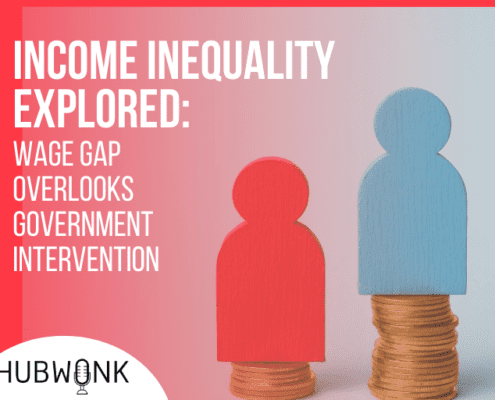
Income Inequality Explored: Wage Gap Overlooks Government Intervention

Collegiate Kangaroo Courts: Title IX Rewrite Expels Free Expression and Due Process
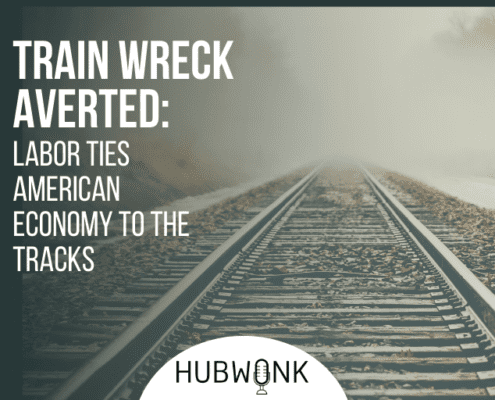
Train Wreck Averted: Labor Ties American Economy to the Tracks
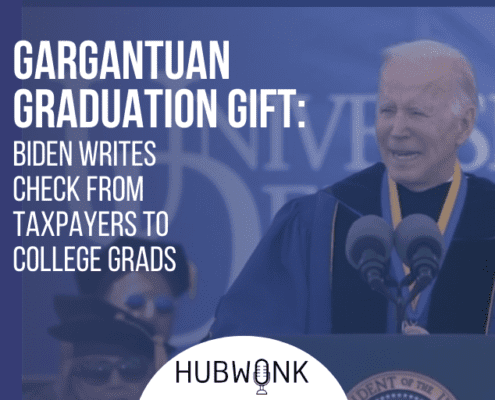
Gargantuan Graduation Gift: Biden Writes Check From Taxpayers To College Grads

MBTA’s Runaway Crisis: Legacy of Neglect Demands Comprehensive Reform
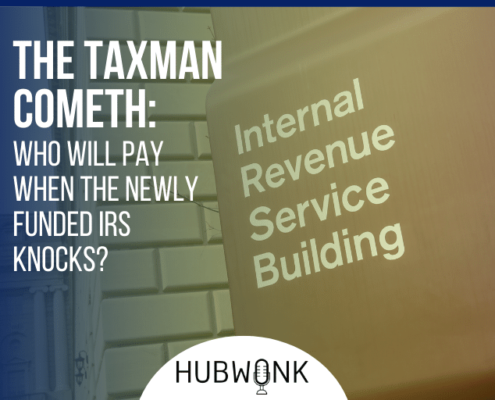
The Taxman Cometh: Who Will Pay When the Newly Funded IRS Knocks?

Civil Society’s Stockade: Protecting Pluralism From Progressive Puritanism
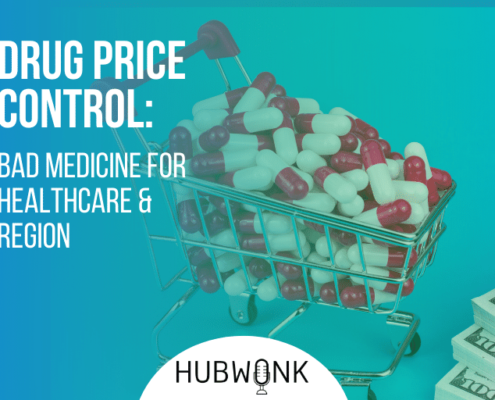
Drug Price Control: Bad Medicine for Healthcare and Region

